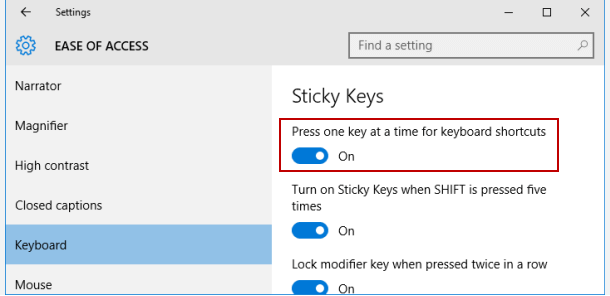In an era where digital accessibility is paramount, features like Sticky Keys have emerged as game-changers for users with motor challenges. This tool allows sequential pressing of modifier keys (e.g., Ctrl, Alt, Shift) instead of requiring simultaneous presses, making complex shortcuts achievable with ease. Whether you’re using Windows, macOS, Linux, or mobile devices, this guide breaks down how to activate Sticky Keys across platforms, along with customization tips and troubleshooting advice.

Sticky Keys is an accessibility feature that lets you press modifier keys one after another rather than holding them down simultaneously. For example, instead of pressing Ctrl + C to copy, you can press Ctrl, release it, then press C. The modifier key remains "stuck" until you press another key or click the mouse. This reduces physical strain and makes shortcuts accessible to users with limited dexterity.
Windows offers multiple methods to activate Sticky Keys, catering to different user preferences:
At the Windows 11 login screen, click the accessibility icon (a person silhouette) in the bottom-right corner.
Toggle Sticky Keys to On.
Press the Shift key five times in quick succession. A prompt will appear—click Yes to enable Sticky Keys.
To disable, repeat the five Shift presses. You can also click the prompt link to disable this shortcut if desired.
Press Win + A to open the Quick Settings panel.
Click the accessibility icon and toggle Sticky Keys on/off.
Open Settings (Win + I), go to Accessibility > Keyboard.
Toggle Sticky Keys to On. Customize options like sound alerts, key locking, and shortcut behavior here.
Search for Control Panel > Ease of Access Center > Make the keyboard easier to use.
Check the box next to Turn on Sticky Keys and click Apply.
macOS integrates Sticky Keys into its Accessibility settings, with additional customization options:
Go to Apple Menu > System Preferences > Accessibility > Keyboard.
Click Hardware and enable Sticky Keys.
Customize: Click Options to set a five-press Shift toggle, enable sound feedback, or display pressed keys on-screen.
Press Option + Command + F5 (or triple-click Touch ID on supported Macs) to open the shortcut panel.
Toggle Sticky Keys directly from here.
Linux distributions like Ubuntu with GNOME offer straightforward activation:

Click your username in the top bar > System Settings > Universal Access.
Go to the Typing tab and switch Sticky Keys to On.
Enable options like Disable if two keys are pressed together or Beep when a modifier key is pressed for smoother usage.
iOS supports Sticky Keys for external keyboards (e.g., Bluetooth keyboards):
Connect your keyboard via Bluetooth.
Go to Settings > Keyboard > Hardware Keyboards.
Toggle Sticky Keys to On.
Press Shift five times to activate. Use modifier keys sequentially (e.g., Command then C for copy).
Google introduced Sticky Keys for physical keyboards in recent Android versions:
Connect a keyboard and go to Settings > System > Physical Keyboard.
Under Accessibility, enable Sticky Keys.
Note: Android 15 also adds Slow Keys (adjust key press delay) and Bounce Keys (ignore rapid presses) for enhanced accessibility.
Windows: In Settings > Accessibility > Keyboard, tweak options like Lock modifier keys when pressed twice or Play a sound when a sticky key is pressed.
macOS: Use the Options button in Sticky Keys settings to personalize sound alerts and on-screen key displays.
Linux: Customize behavior under Universal Access > Typing.
Accidental Activation: Disable the five-press Shift shortcut in Windows or macOS settings.
Hardware Conflicts: If keys stick physically, clean your keyboard or check for debris.
Software Glitches: Restart your device or update drivers. On Windows, reset keyboard settings via the Control Panel.
Sticky Keys is a powerful accessibility tool that democratizes keyboard navigation. By following these platform-specific steps, you can unlock seamless shortcut usage for yourself or someone in need. Remember to explore customization options to tailor the feature to individual needs. For persistent issues, consult official support resources or device documentation. With Sticky Keys, typing becomes not just easier but more inclusive for all.